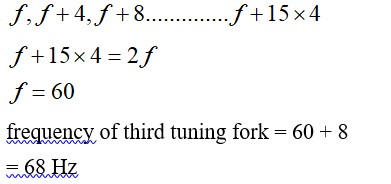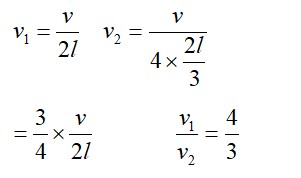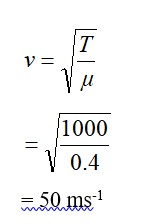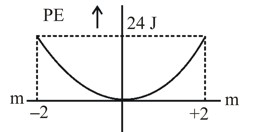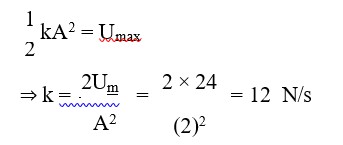15.20 A train, standing at the outer signal of a railway station blows a whistle of frequency 400 Hz in still air.
(i) What is the frequency of the whistle for a platform observer when the train
(a) Approaches the platform with a speed of 10 m s–1
(b) Recedes from the platform with a speed of 10 m s–1?
(ii) What is the speed of sound in each case? The speed of sound in still air can be taken as 340 m s–1.
15.20 A train, standing at the outer signal of a railway station blows a whistle of frequency 400 Hz in still air.
(i) What is the frequency of the whistle for a platform observer when the train
(a) Approaches the platform with a speed of 10 m s–1
(b) Recedes from the platform with a speed of 10 m s–1?
(ii) What is the speed of sound in each case? The speed of sound in still air can be taken as 340 m s–1.
-
1 Answer
-
Frequency of the whistle, = 400 Hz
Speed of the train, = 10 m/s
Speed of sound, v = 340 m/s
The apparent frequency (f’) of the whistle as the train approaches the platform is given by the relation:
f’ = ( = ( 412.12 Hz
The apparent frequency (f”) of the whistle as the train recedes from the platform is given by the relation:
f” = ( = ( 388.57 Hz
The apparent change in the frequency of sound is caused by the relative motions of the source and the observer. These relative motions produce no effect on the speed of sound.
Therefore, the speed of sound in ai
...more
Similar Questions for you
The acceleration of wave is g/2. Its speed increases as it moves up. So answer is (2)
Taking an Exam? Selecting a College?
Get authentic answers from experts, students and alumni that you won't find anywhere else
Sign Up on ShikshaOn Shiksha, get access to
- 66k Colleges
- 1.2k Exams
- 680k Reviews
- 1800k Answers

